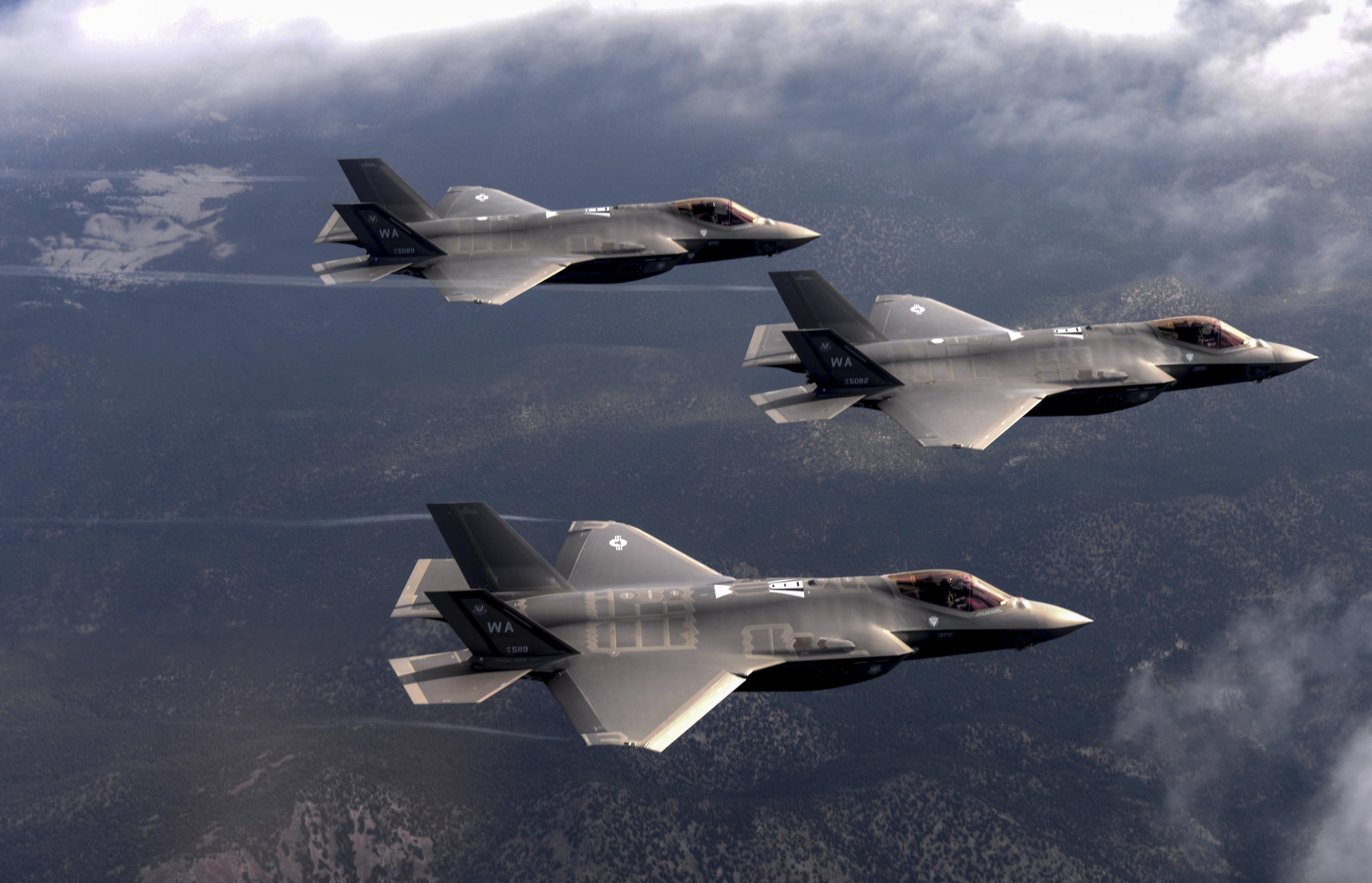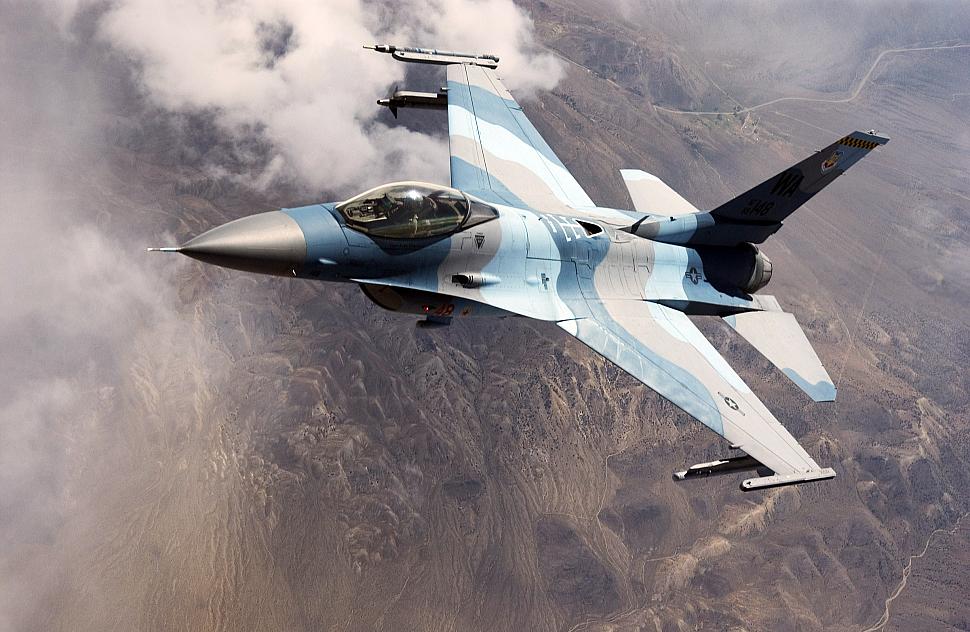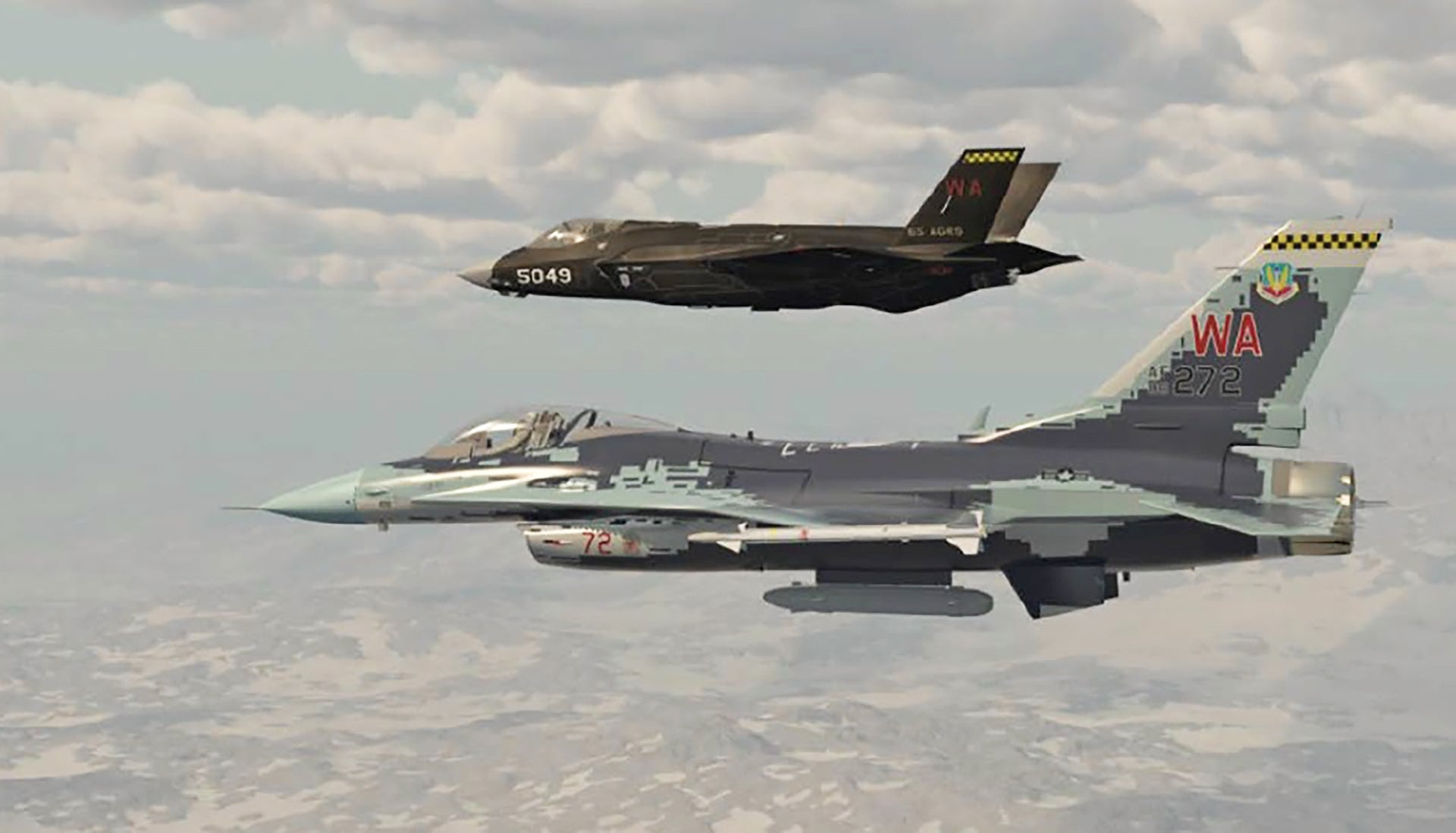The Air Force’s move to assign some of its oldest F-35As to a new aggressor squadron appears to have support in Congress based on the 2020 National Defense Authorization Act that was recently signed into law, but it also has some caveats that could alter the initiative’s current trajectory.
It is no secret that the Air Force is in need of a stealthy aggressor capability to mimic emerging threats abroad, especially those from China. We were among the first to report on its plan to reassign nine early low-rate production (LRIP) F-35As to Nellis Air Force Base where they would become the core of a reconstituted 65th Aggressor Squadron alongside the existing 64th Aggressor Squadron. You can read all about the need for this capability and the USAF’s plan for realizing it in this past article of ours.
Now Congress wants a better idea of what the USAF has in mind in terms of a roadmap for modernizing its entire aggressor capability. As such, no transfers of F-35As for aggressor duties will be authorized until the Chief Of Staff of the Air Force submits a detailed strategy to do this. This must include things like potential basing options and justifications for the F-35s, as well as an analysis for increasing the size of the two aggressor squadrons the USAF already has—made up of Block 30 and Block 42 F-16C/Ds—from having 18 aircraft in their primary inventories to 24.
Maybe the most promising part of Congress’s demands is that it wants to know how the existing aggressor force will be upgraded to better match real threats around the globe, something that is badly needed. Items specifically mentioned for upgrade include “aircraft radar, infrared search-and-track systems [IRSTs], radar warning receiver, tactical datalink, threat-representative jamming pods” as well as “other upgrades necessary to provide a realistic advanced adversary threat.” With even lower-tier adversaries gaining these capabilities, the fact that the Air Force’s aggressors don’t possess many of them is a major issue, as our readers are well aware of.
The relevant section in the NDAA reads as such:
SEC. 149. AIR FORCE AGGRESSOR SQUADRON MODERNIZATION.
(a) Sense of Congress.–It is the sense of Congress that–
(1) it is critical that the Air Force has the capability to train against an advanced air adversary in order to be prepared for conflicts against a modern enemy force, and that in order to have this capability, the Air Force must have access to an advanced adversary force prior to United States adversaries fielding a 5th-generation operational capability; and (2) the Air Force’s plan to use low-rate initial production F-35As as aggressor aircraft reflects a recognition of the need to field a modernized aggressor fleet.
(b) Report.–
(1) In general.–The Secretary of the Air Force may not transfer any low-rate initial production F-35 aircraft for use as aggressor aircraft until the Chief of Staff of the Air Force submits to the congressional defense committees a comprehensive plan and report on the strategy for modernizing its organic aggressor fleet.
(2) Elements.–The report required under paragraph (1) shall include the following elements:
(A) Potential locations for F-35A aggressor aircraft, including an analysis of installations that–(i) have the size and availability of airspace necessary to meet flying operations requirements; (ii) have sufficient capacity and availability of range space; (iii) are capable of hosting advanced-threat training exercises; and (iv) meet or require minimal addition to the
environmental requirements associated with the basing
action.
(B) An analysis of the potential cost and benefits of expanding aggressor squadrons currently operating 18 Primary Assigned Aircraft (PAA) to a level of 24 PAA each.
(C) An analysis of the cost and timelines associated with modernizing the current Air Force aggressor squadrons to include upgrading aircraft radar, infrared search-and-track systems, radar warning receiver, tactical datalink, threat-representative jamming pods, and other upgrades necessary to provide a realistic advanced adversary threat.
Unless major changes to the current plan are made following the delivery of the required studies, this really shouldn’t slow down the standing up of the 65th Aggressor Squadron as the jets weren’t set to be transferred until 2022 anyway. What it will do is push the Air Force to really get smart about enhancing its overall aggressor capability so that pilots will face similar threat representations to those they would see in actual combat.

AESA radars, proprietary data-links, and especially IRSTs, the latter of which has the ability to negate radar-evading stealth technology, albeit with some limitations, really need to become standard equipment for these units as soon as possible. They already use quite advanced podded electronic warfare systems, including those from Israel, but staying on the leading edge of this shadowy realm of warfare is key.
The good news is that all of this is “off-the-shelf” capabilities that can be easily acquired and integrated onto the F-16 airframe. The Air Force has just moved ahead with its purchase to buy hundreds of new AESA radars for some of its F-16C/D fleet, so the aggressor requirement could be added. The same can be said for the most recent iteration of the IRST21 sensor, which the 64th Aggressor Squadron tested during one exercise years ago. It has recently entered production for the F-15C/D and F/A-18E/F fleets and it is being tested on the F-16 in its latest podded form.
It’s worth noting that not every aggressor F-16s would need these systems. A capable data-link system can share the sensor data from these systems across a formation of aggressor aircraft and beyond. In other words, it’s not necessary to buy an AESA radar set and IRST pod for each aircraft in the aggressor squadrons’ inventories. By equipping say a third of their fleet with these systems, but all of them with enhanced data-links, the rest of the aircraft will benefit from these capabilities when they fight alongside the planes equipped with them.
The inclusion of upgraded electronic warfare and situational awareness enhancing threat warning systems is also critical to keeping the force relevant for years to come.

Also, the addition of airborne early warning and control (AEW&C) assets should be included in this report. The aggressors currently lack this capability, relying on a ground control intercept (GCI) concept of operations as well as their own onboard sensors. This has severe limitations over a system that includes an airborne radar and control platform. AEW&C aircraft are proliferating around the globe and China is betting heavily on them for its future air combat needs and Russia is increasing its capabilities in this area, as well. With this in mind, integrating an AEW&C capability on a regular basis with the aggressor squadrons should become a priority going forward.
Of course, all this comes down to money, but the fact that Congress wants the Air Force’s wishlist is a good sign that funds would be allocated to realizing at least part of it.
The NDAA also doesn’t mention the rapidly increasing use of private adversary support contractors to augment the organic aggressor squadrons’ capacity and capabilities. This trend will only become more prominent as time goes on and even though it doesn’t have to do specifically with the status of the USAF’s own aggressor squadrons, it needs to be factored in any future roadmap for them.

The oddest part about Congress’s demands is the base studies. Sending the F-35A aggressors to Nellis is a no-brainer. The base sits at the heart of the flying force’s tactics development and training universe. It’s home to the Weapons School and a constant rotation of high and low-profile exercises, such as Red Flag and JFEX. Beyond that, the Nevada Test and Training Range is the most capable overland range in the world and supports all types of testing and training year-round. It also has the highest fidelity array of replicated adversary threats anywhere in the world. Bedding-down the first F-35 aggressors anywhere else seems counter-intuitive on virtually every level. Additionally, it would be surprising if some of the justification information hasn’t been gathered and produced already.
We also know that the USAF does have some stealth aggressor capability in the form of the F-117 Nighthawk. But that airframe is quite limited compared to a high-performance, sensor-laden, sensor-fusion capable, stealth fighter like the F-35A, especially one tweaked specifically for adversary duties. There are also a tiny handful of F-117s flying, so they can only be used for very specialized roles and scenarios.
Regardless, there is more good than bad in the NDAA when it comes to the future of the Air Force’s aggressor force and hopefully coming up with a cohesive plan for it will allow it to get more attention and more badly needed funding.
Hattip to our friends over at Janes.
Contact the author: Tyler@thedrive.com
